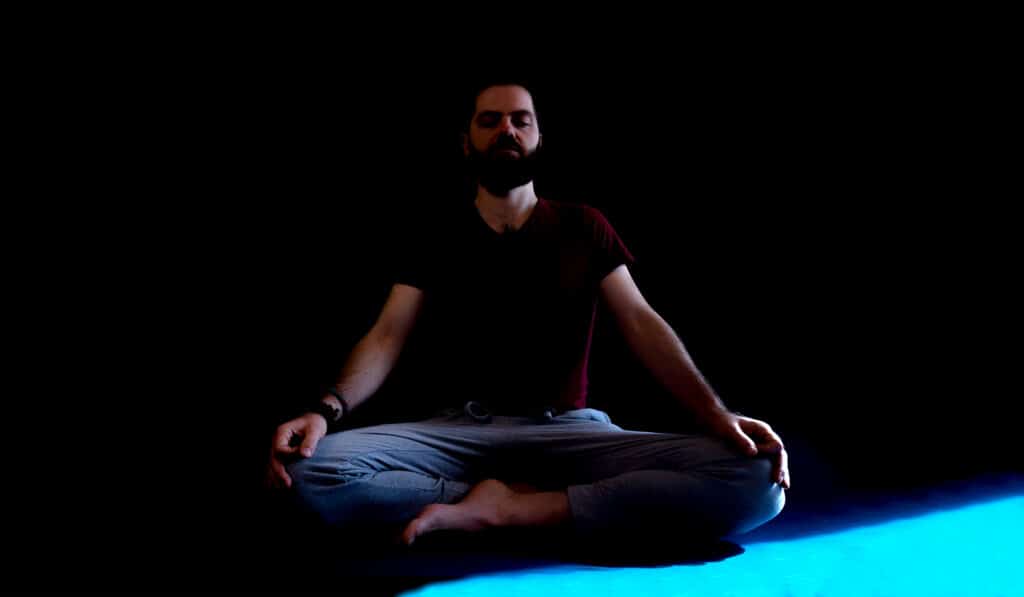Introduction to Kriya Yoga
The Origins of Kriya Yoga
Kriya Yoga is a form of spiritual practice that focuses on achieving self-realization and spiritual enlightenment. Tracing its roots to ancient India, Kriya Yoga integrates physical postures, breath control techniques, and meditation to facilitate spiritual growth. Understanding the origins of Kriya Yoga helps us appreciate its depth and significance, both historically and in modern practice.
The practice of Kriya Yoga was popularized in the modern era by Paramahansa Yogananda through his landmark work, “Autobiography of a Yogi.” However, its origins go much deeper, tracing back to ancient texts and oral traditions passed down through generations. Kriya Yoga was taught by sages and yogis who emphasized the importance of a disciplined approach to achieving spiritual liberation.
Yogananda’s teacher, Sri Yukteswar, and his lineage further highlight Kriya Yoga’s deep roots. Sri Yukteswar received the teachings from his guru, Lahiri Mahasaya, who, in turn, was initiated by the legendary Babaji. This unbroken lineage underscores the authenticity and time-tested efficacy of Kriya Yoga.
The core principles and techniques of Kriya Yoga are outlined in ancient scriptures such as the Yoga Sutras of Patanjali, the Bhagavad Gita, and various tantric texts. These texts provide a comprehensive framework for the practice, detailing the spiritual, mental, and physical aspects of the discipline. This holistic approach aims to harmonize the practitioner’s body, mind, and spirit, paving the way for profound inner transformation.
Understanding the origins of Kriya Yoga helps us appreciate its rich history and the wisdom it embodies. This insight also underscores the timeless relevance of Kriya Yoga as a path to spiritual awakening and self-realization.
Core Principles of Kriya Yoga
The Science Behind Kriya Yoga
Kriya Yoga is often described as a scientific approach to spiritual development. It combines specific techniques to bring about a balanced and harmonious state of being. Understanding the science behind Kriya Yoga helps us appreciate how this practice facilitates profound inner transformation.
At its core, Kriya Yoga works with the subtle energy channels, or nadis, and the life force, or prana, within the body. By directing this energy through specific techniques, practitioners can clear blockages, invigorate the nervous system, and cultivate a heightened state of awareness. These techniques include pranayama (breath control), dharana (concentration), and dhyana (meditation).
Pranayama is fundamental in Kriya Yoga. It involves controlled breathing exercises designed to purify the energy channels and balance the flow of prana. These breathing techniques help calm the mind and prepare it for deeper states of meditation. Regular practice of pranayama can also lead to improved physical and mental health, enhancing overall well-being.
Meditation is another crucial aspect of Kriya Yoga. Through focused concentration and inner stillness, practitioners learn to transcend the restless nature of the mind. This practice leads to a state of deep inner peace and heightened spiritual awareness. The advanced stages of Kriya Yoga involve specific meditation techniques that enable the practitioner to merge individual consciousness with universal consciousness, achieving self-realization.
Understanding the science behind Kriya Yoga reveals its comprehensive approach to spiritual growth. By working with the subtle energies within the body and employing specific techniques, practitioners can achieve profound transformation and spiritual enlightenment. The systematic nature of Kriya Yoga makes it a powerful tool for those seeking to explore the deeper dimensions of their being.
The Eight Limbs of Kriya Yoga
Kriya Yoga is often aligned with the Eight Limbs of Yoga, as described in the Yoga Sutras of Patanjali. These limbs provide a structured path toward spiritual enlightenment, integrating ethical practices, physical postures, breath control, and meditation. Understanding the Eight Limbs of Kriya Yoga helps us appreciate the holistic nature of this practice.
The first two limbs, Yama and Niyama, consist of ethical guidelines and personal observances. These principles serve as the foundation for spiritual practice, promoting harmony with oneself and others. Yama includes non-violence, truthfulness, and non-possessiveness, while Niyama emphasizes purity, contentment, and self-discipline.
The third limb, Asana, refers to physical postures that promote strength, flexibility, and balance. In Kriya Yoga, the focus is on maintaining comfortable and stable postures for meditation. This practice helps prepare the body for the more advanced techniques of breath control and meditation.
Pranayama, the fourth limb, involves breath control exercises that help balance and purify the energy channels. These techniques enhance the flow of prana and calm the mind, preparing the practitioner for deeper states of meditation.
The fifth limb, Pratyahara, refers to the withdrawal of the senses from external stimuli. This practice helps the practitioner turn inward, fostering inner stillness and concentration. It serves as a bridge between the physical practices and the higher stages of meditation.
Dharana, the sixth limb, involves focused concentration on a single point or object. This practice helps develop mental clarity and discipline, paving the way for the deeper states of meditation.
Dhyana, the seventh limb, is the practice of sustained meditation. Here, the practitioner experiences a continuous flow of awareness, transcending the ego and achieving a state of deep inner peace.
The Benefits of Practicing Kriya Yoga
Physical Benefits
Kriya Yoga offers a wide range of physical benefits that enhance overall health and well-being. Understanding these benefits helps us appreciate how this comprehensive practice positively impacts the body. One of the primary physical benefits of Kriya Yoga is the increased flow of prana, or life force energy, throughout the body. This enhanced energy flow boosts vitality, strengthens the immune system, and promotes overall health.
Regular practice of Kriya Yoga helps improve cardiovascular health by enhancing blood circulation and reducing blood pressure. The controlled breathing techniques in Kriya Yoga also increase lung capacity and improve respiratory function. These benefits collectively support a healthier heart and lungs, contributing to greater physical endurance and resilience.
Kriya Yoga also promotes flexibility, strength, and balance through various asana practices. While the focus of Kriya Yoga may not be asana, incorporating physical postures into the practice helps maintain the body’s flexibility and strength. This physical conditioning prepares the body for the more advanced stages of breath control and meditation.
Moreover, Kriya Yoga helps regulate the endocrine system, promoting hormonal balance and overall well-being. The practice stimulates the various glands in the body, including the thyroid, adrenal, and pineal glands, supporting their proper function. This hormonal balance is essential for maintaining overall health and emotional stability.
Stress reduction is another significant physical benefit of Kriya Yoga. The combination of breath control and meditation helps activate the body’s relaxation response, reducing the harmful effects of chronic stress. This relaxation response helps lower cortisol levels, alleviating tension and promoting a sense of calm and well-being.
Mental and Emotional Benefits
Kriya Yoga not only offers physical benefits but also profoundly impacts mental and emotional well-being. Understanding these benefits highlights the holistic nature of this practice, promoting harmony and balance in all aspects of life.
One of the primary mental benefits of Kriya Yoga is improved focus and concentration. The techniques of pranayama and meditation help calm the mind and enhance cognitive function. By regularly practicing these techniques, individuals can experience heightened mental clarity and improved decision-making abilities.
Kriya Yoga also fosters emotional stability and resilience. The practice encourages self-awareness and introspection, helping individuals understand and manage their emotions better. This increased emotional intelligence supports healthier relationships and improved communication skills.
Additionally, Kriya Yoga helps alleviate symptoms of anxiety and depression. The practice activates the relaxation response, reducing stress and promoting a sense of inner peace. The state of deep meditation achieved in Kriya Yoga helps release negative thought patterns and emotional blockages, fostering a more positive and optimistic outlook on life.
Understanding the mental and emotional benefits of Kriya Yoga reveals its potential to transform the mind and spirit. By improving focus and concentration, fostering emotional stability, and alleviating anxiety and depression, Kriya Yoga promotes mental and emotional well-being.
The Spiritual Journey of Kriya Yoga
Achieving Self-Realization
The ultimate goal of Kriya Yoga is to achieve self-realization and spiritual enlightenment. Understanding this spiritual journey helps us appreciate the profound potential of this practice.
Kriya Yoga emphasizes the importance of inner stillness and self-awareness. Through meditation and breath control, practitioners learn to transcend the restless nature of the mind. This practice leads to a state of deep inner peace and heightened spiritual awareness.
Advanced stages of Kriya Yoga involve specific meditation techniques that enable the practitioner to merge individual consciousness with universal consciousness. This state of unity and oneness is referred to as Samadhi. In this state, the practitioner experiences a profound sense of connection with the divine, transcending the limitations of the ego and achieving self-realization.
Understanding the spiritual journey of Kriya Yoga reveals its transformative potential. By fostering inner stillness, self-awareness, and unity with the divine, Kriya Yoga offers a path to self-realization and spiritual enlightenment.
Conclusion: Embracing Kriya Yoga
Kriya Yoga is a comprehensive practice that integrates physical postures, breath control, and meditation to achieve self-realization and spiritual enlightenment. Understanding its origins, core principles, and benefits highlights the profound potential of this practice.
By integrating ethical practices, physical conditioning, and advanced meditation techniques, Kriya Yoga offers a holistic path to self-realization. The physical, mental, emotional, and spiritual benefits of Kriya Yoga foster harmony and balance in all aspects of life.
In conclusion, Kriya Yoga is a powerful tool for achieving spiritual growth and inner transformation. By embracing this practice, individuals can embark on a journey of self-discovery and enlightenment, fostering a deeper connection with themselves and the divine.
